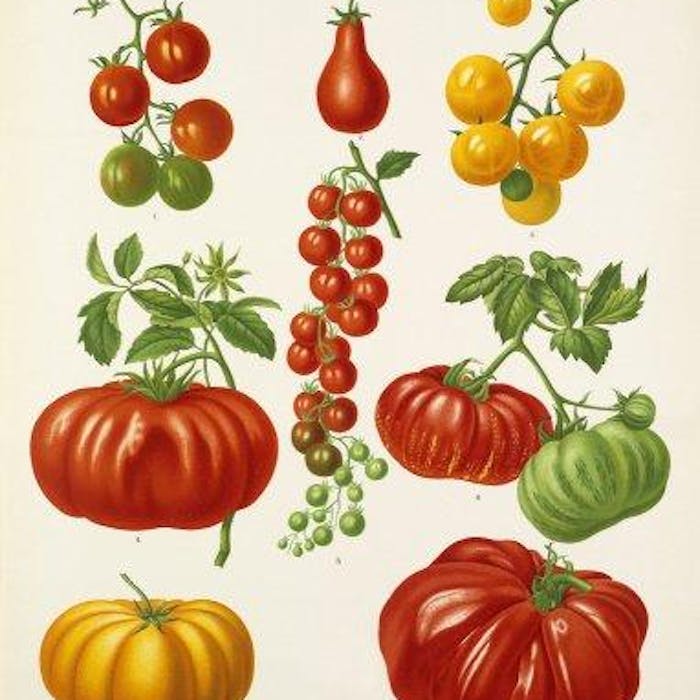
The British tomato and the glasshouse growing boom
The tomato was brought to Europe by explorers returning from South America in the sixteenth century. Now officially designated as a fruit, rather than a vegetable, it was initially regarded as pretty but poisonous, though soon became a significant crop. And for 70 years or so, it was the basis of a major industry in the Sussex seaside town of Worthing begun in Victorian times (see picture).
The wild ancestor of the tomato is native to western South America, with fruit the size of peas. Aztecs were the first to domesticate the fruit and use it in their cooking.
When introduced to Europe, the tomato was initially grown as an ornamental plant. It was regarded with suspicion as a food because botanists recognised it as a nightshade, a relative of the poisonous belladonna. This was exacerbated by the unwelcome interaction of the tomato's acidic juice with pewter plates - which did not inspire confidence.
Once they began to eat tomatoes, the British for a long time preferred to cook them - just in case!
The invention of plate glass (as used in the Crystal Palace Great Exhibition of 1851) enabled cultivation to reach an industrial scale in glasshouses that kept the crops clear of the cold and encouraged ripening.
By 1899 Worthing was described as a ‘town of hot-houses’, supplying the markets in Brighton and London with grapes, cucumbers and the town’s most famous export, the tomato. ‘Sunny Worthing’ earned that title not for its beaches, but because it was the perfect place for a very home-grown industry. Pioneer growers included the Linfield family.
The town's good rail links helped too. Four fruit freight trains a week left the town. The fresh produce of Worthing proved particularly valuable during the Second World War.
Pressure for housing land in the 1930s to 1960s saw the industry move west to Littlehampton, and to the market gardens south of Chichester, and the old greenhouses of Worthing have disappeared without trace under housing.
The industry in Sussex contracted further from the 1970s, once Spain joined the EC and targeted the UK market with cheaper imports, but specialist varieties are still grown under glass (or polythene) around Britain.
Further reading
Links to external websites are not maintained by Bite Sized Britain. They are provided to give users access to additional information. Bite Sized Britain is not responsible for the content of these external websites.
